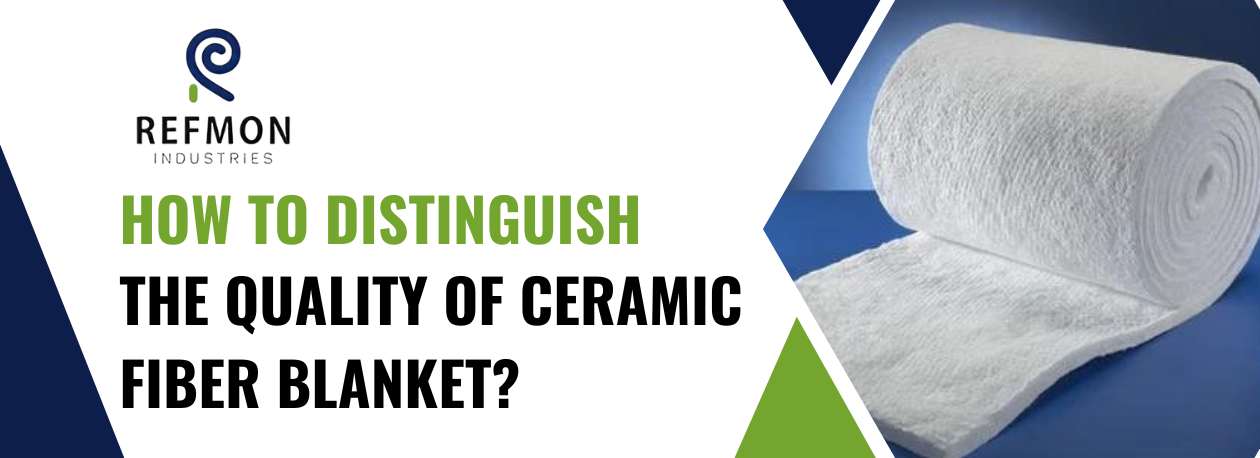
How to distinguish the quality of ceramic fibre blankets?
Introduction: Ceramic fibre blanket are insulation materials made of refractory ceramic fibres spun or blown from molten alumina-silica materials. Because it is lightweight, flexible, and has excellent thermal insulation properties, it is a popular choice for high-temperature applications like furnace linings, kiln linings, and industrial insulation.
Ceramic fibre blankets uses particularly in high-temperature environments requiring thermal insulation.
How to handle ceramic fibre blanket?
Ceramic fibre blankets are lightweight, easy to cut and install, and can be used in various industries such as metal processing, power generation, chemical processing, and aerospace. They are, however, fragile and may require careful handling to avoid breakage. Overall, ceramic fibre blankets provide a versatile, cost-effective solution for high-temperature insulation.
Several factors, including temperature rating, density, compressive strength, thickness, fibre composition, and durability, determine a ceramic fibre blanket's quality. A good ceramic fibre blanket will have a high-temperature rating, a high density, and good compressive strength and durability. It should also be made of high-purity fibres resistant to chemical and thermal degradation and provide excellent insulation performance. It is critical to consider all of these factors when selecting a ceramic fibre blanket to ensure that you select a product that will meet your insulation needs and provide long-lasting performance.
Identify the quality of ceramic fibre blankets.
Several factors can be used to differentiate the quality of ceramic fibre blankets, including:
- Temperature rating: A high-temperature rating indicates that a high-quality ceramic fibre blanket can withstand extreme temperatures without degrading or losing its insulating properties.
- Density: The density of a ceramic fibre blanket can also be used to determine its quality. A blanket with a higher density will typically have better thermal performance because it has more fibres per unit volume to trap and retain them.
- Thickness: A ceramic fibre blanket's thickness can affect its insulating properties, with thicker blankets providing better insulation. Thicker blankets, however, may be more difficult to handle and install.
- Compressive strength: A ceramic fibre blanket's compressive strength measures its ability to withstand pressure without breaking or degrading. A high-quality blanket will have good compressive strength, which is important for pressure or weight applications.
- The composition of the ceramic fibres used to make the blanket can also impact its quality. High-purity fibres will generally perform better in insulation and are more resistant to chemical and thermal degradation.
- A high-quality ceramic fibre blanket will be long-lasting and resistant to wear and tear. It should also withstand thermal cycling, so it can be heated and cooled repeatedly without cracking or losing its insulating properties.
Overall, it is critical to consider all these factors when selecting a ceramic fibre blanket to ensure you select a high-quality product that will meet your insulation needs.
Rockwool insulation is a highly effective and versatile thermal and acoustic option with numerous advantages for various applications.
Conclusion
Ceramic fibre blankets are a versatile and effective high-temperature insulation solution. They are made of refractory ceramic fibres and have excellent thermal insulation and low thermal conductivity. Ceramic fibre blankets are available in various densities, thicknesses, and temperature ratings, with the highest quality blankets capable of withstanding temperatures as high as 2300°F (1260°C).
Furnace lining materials protect the inside of a furnace from extreme temperatures, chemical attacks, and mechanical wear. The type of lining material used will be determined by the furnace's specific requirements, such as operating temperature, atmosphere, and processed materials. Refmon industries is one of the best industry for ceramic blankets.